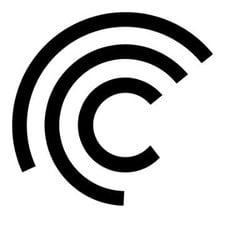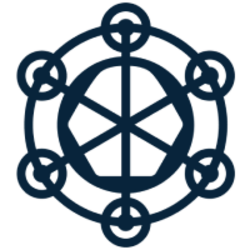
What is a crypto rug pull?
The rise of the cryptocurrency market has drawn more con artists looking to make a quick profit. Crypto Rug pulls have grown to be common in Web3, despite the fact that some cryptocurrency scams employ conventional fraud strategies like Ponzi schemes. Rug pull scammers frequently employ cutting-edge techniques, such as malicious smart contract code, which catches many retail investors off guard as developers flee with millions.
What is rug pull?
A rug pull is a type of cryptocurrency scam in which con artists deceive the public to secure funding before escaping with the digital tokens of the investors. The goal of developers of rug pulls is to draw as many retail investors as possible. They frequently advertise their tokens on social media platforms. Developers transfer depositors’ cryptocurrency to their wallets or allow them to cash out on a cryptocurrency exchange once enough people have bought into this scam project.
Rug pulls are a common occurrence in Defi (decentralized finance) apps. Defi’s inherent decentralization and lack of regulation make it simpler for scammers to conceal their identities and make off with a sizable amount of cryptocurrency. Not all fraudsters must remain anonymous, though.
Rug pulls are quite common, judging by the impact of investment fraud. According to blockchain analysis company Chainalysis, scammers defrauded $2.8 billion, or $7 million per day, over the course of 2021. Crypto rug pull has grown significantly in recent years.
Also Read: Tokenization: What is it and how does it work?
What different types of rug pulls are there?
Every rug pull involves criminals stealing cryptocurrency from unwary investors. However, there are three main ruses used by con artists:
1. Liquidity theft
Liquidity theft, also known as liquidity stealing, is the sudden withdrawal of all the coins from the liquidity pool that is being used to finance a project by its founder. When this occurs, the token’s locked-in value is released, leaving investors with a useless asset that is useless for anything. The Defi area has the highest prevalence of this kind of rug pull.
2. Limiting sell orders
This is a more subtle way for dishonest founders to defraud investors. In this kind of fraud, a developer creates a token with a smart contract that restricts who else can sell them. As a result, investors are locked into an asset that cannot be traded. Also, are unable to sell the token to other peers. When enough investors have purchased the token and the founder is sitting on a profit, they sell off their tokens, leaving investors with worthless tokens that they can do nothing with.
3. Pumping and dumping
Dumping refers to the rapid sale of a sizable portion of a founder’s or crypto developer’s own tokens. As a result of the demand for the coin essentially falling and the supply increasing, the price of the coin is drastically driven down. In a rug pull, dishonest founders will pump the token to raise its value and appeal to investors by luring them with promises of big returns. Risky investors will purchase the tokens with marketing and promotion. The founder will sell the tokens when the price action is strong in order to profit from the fervor.
Also Read: What Are NFT Derivatives? How Are They Different From Original NFT?
How many types of rug pulls
A rug pull can also be found in one of two different forms:
1. Hard rug pull
When a founder uses maliciously the project to defraud investors, this is known as a “hard rug pull.” This indicates that the smart contract contains elements that are concealed but intended to deceive investors, and the code clearly shows that the intent is to steal money. An example of a hard rug pull is liquidity stealing, where the code is written to lock investors into an asset with no real purpose or function.
2. Soft rug pull
Soft rug pulls describe the abrupt sale of cryptocurrency assets by token developers. The remaining crypto investors are left with a token that has been significantly devalued as a result. Dumping may not be a crime in the same sense that hard pulls is, despite the fact that it is unethical.
What are the ethical and legal implications of crypto rug pulls?
Liquidity theft and limiting sell orders are generally illegal. Both of these strategies indicate that developers designed their tokens or dApps to entice retail investors. Both of these scams are known as “hard rug pulls” because the fraud is “hardwired” into the code of a crypto project.
In contrast, “pump and dump” schemes are legally ambiguous. Although “pump and dump” rug pull are unethical, proving illegal activity on the part of scammers is more difficult. It is not necessarily illegal to purchase a cryptocurrency on the open market and publicize it online. This is especially true if the con artists behind a “pump and dump” scheme invested in a token they had nothing to do with creating. Some people refer to “pump and dump” schemes as “soft rug pulls” because there is nothing in the project’s code that predisposes it to failure.
Also Read: Explained: What is NFTs Rarity? Why Is Rarity Important For NFTs?
How to recognize a Crypto Rug Pull
Crypto rug pulls can be deceptive, but there are a few red flags to look for when evaluating new tokens:
- Unclear whitepapers
- No third-party audit
- Anonymous developers
- Excessive social media marketing
- Unusual price movement
How to Avoid a Crypto Rug Pull?
Investors can protect themselves from rug pulls by keeping an eye out for a few obvious warning signs, such as the liquidity not being locked and the lack of an external audit.
1. Stick with established dApps
Consider sticking with top-tier dApps like Uniswap or Aave rather than looking for upcoming cryptocurrency projects. It is more likely that projects with a strong community, a long history, and a good reputation will provide genuine tokens and rewards.
2. Limits on sell orders
A malicious party could program a token to limit some investors’ ability to sell it while leaving others unrestricted. These sales restrictions are telltale indicators of a fraudulent project.
It can be challenging to determine whether there is a fraudulent activity because selling restrictions are hidden in the code. One way to check this is to buy a small quantity of the new coin and then try to sell it right away. The project is probably a scam if there are issues offloading what was just bought.
3. Test a small-cap token on a trusted DEX
Buy a small amount of this cryptocurrency and try to sell it on a reputable DEX like Uniswap if you have any suspicions that you won’t be able to sell a token. This cryptocurrency is probably a limiting sell scam if you can’t swap it.
4. Suspiciously high yields
Anything that seems too good to be true probably is. It’s probably a Ponzi scheme if a new coin’s yields seem suspiciously high but it doesn’t turn out to be a rug pull. Although it’s not always a sign of fraud when tokens offer an annual percentage yield (APY) in the triple digits. However, these high returns typically come with an equally high risk.
5. No external audit
New cryptocurrencies now routinely go through a formal code audit process run by a trustworthy third party. Tether (USDT), a centralized stablecoin whose team had neglected to disclose that it held non-fiat-backed assets, is one infamous example. An audit is particularly relevant for decentralized currencies, where auditing is required by default for Defi projects.
Also Read: What Is Real Estate NFT? What Impact Is It Having On The Real Estate Sector?
Crypto rug pull examples
1. OneCoin
OneCoin, a company based in Bulgaria, is accused of being the front for a digital token Ponzi scheme. However, it defrauded more than three million of its participants between 2014 and 2016 of $4 billion. It represents the largest amount ever stolen in the history of cryptocurrency. After she disappear in 2017, according to the BBC, the person thought to be responsible for the theft was placed on the FBI’s Ten Most Wanted Fugitive List. Onecoin was one the famous example of crypto rug pull.
2. Africrypt
Africrypt, a South African digital token investment platform, was taken down in 2021 by a $3.6 billion attack. Raees and Ameer Cajee, the company’s founding brothers who fled to the UK, has reportedly denied any involvement.
3. SQUID token rug pull
One of the most devastating limiting sell rug pulls is the Squid Game rug pull. SQUID is a digital token that was introduced by an unidentified group in response to the demand for Netflix’s “Squid Game.” This token was allegedly intended for use in a play-to-earn game based on the Netflix series. The SQUID token reached a high of almost $3,000 per token when it was first founded in late 2021 before tumbling to zero.
4. BitConnect
The now-defunct lending platform BitConnect in England assured investors of returns despite market turbulence. Instead, it’s claimed that founder Satish Kumbhani was reimbursing later investors with money from earlier investors, ultimately earning $2.4 billion in global profit. However, according to CNN, Kumbhani could spend up to 70 years in prison.
Also Read: Initial Game Offering: A beginner’s Guide On Launching An IGO











































































Be the first to comment